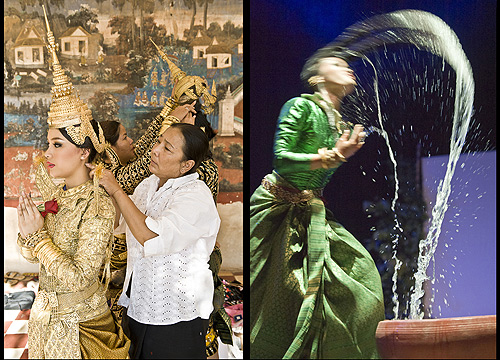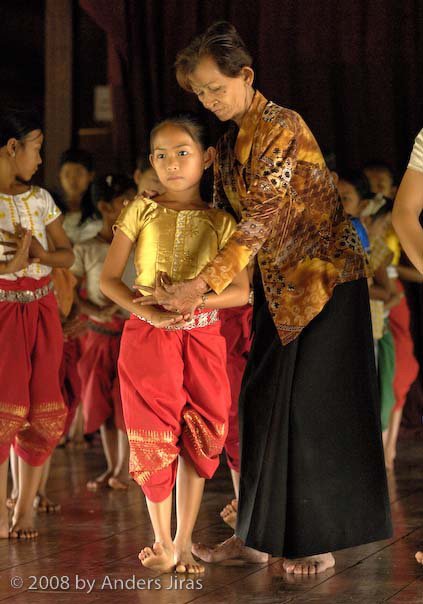Swedish Dance Museum Features Cambodian Dance Photos by Anders Jirås
A story about Cambodian dance in Pictures by Anders Jiras ( Jirås)
“ART CANNOT BE KILLED OFF – ALTHOUGH POL POT TRIED”
Stockholm — Cambodian dance is the featured exhibition in Sweden’s Dansmuseet from March 25 until May 8. The powerful images hold special meaning because they are the work of Swedish photographer Anders Jirås, who has spent years in Cambodia devoted to documenting Cambodian performing arts.

As the exhibit describes:
“The Khmer civilization flourished in South-East Asia a thousand years ago and its legacy still shapes the region’s art and culture to this day. Aside from the architecture, Cambodian dance is now what visitors find most captivating, as the disciplines of dance, drama, shadow puppetry, folk dance and music merge into each other.
“The civil war, Pol Pot and other calamities almost eradicated this dance. However, Cambodian culture is strong, with dance and music an expression of a cohesive power. With so little written down, passing on and preserving the dance as part of an oral tradition was problematic. With nine out of ten dancers from the Royal Palace killed during Pol Pot’s reign of terror in the 1970s, parts of the tradition were lost.
“But not everything.
“Some dancers managed to survive and they had carefully concealed their knowledge, allowing the dance to be restored once more. Now, thirty years later, the few survivors are passing their knowledge on to a new generation of dancers. It is this transfer of tradition that Swedish photographer Anders Jirås, who lives in Phnom Penh, has captured in his study of a form of dance that managed to survive against all the odds. It seems that art cannot be killed off after all.”
The exhibit’s visual beauty conveys this message of optimism and hope. The arts thrive in Cambodia and it is a delight to see them recognized so far from home.

About Anders Jirås
For more than three years, Swedish photographer Anders Jirås has spent most of his time in Cambodia devoting himself to capturing dynamic images of the Cambodian performing arts.
The National Museum of Cambodia recently featured his exhibition of photos of the Royal Ballet from November 2010 to February 2011. This was the first exhibit in the museum’s history devoted to this ancient living art.
His international exhibit on Cambodian performing arts at the Museum of Dance in Stockholm, Sweden runs from 25 March – 8 May, 2011.
The artist’s work has appeared in public exhibits for more than 40 years: see Anders Jirås Exhibitions 1966-2017.

About the Dansmuseet – The Dance Museum
Stockholm’s dance museum, located in the heart of Sweden’s capital city near the Royal Opera House, offers far more than the name reveals. Its colorful displays show visitors an historic and creative range of theatrical arts, from the Russian and Swedish ballets in Paris, circa 1910-1930, to the rich cultural dance forms of Asia and Africa.
The museum was founded by Rolf de Maré (1888–1964), a Swedish aristocrat, art collector and leader of the Swedish Ballet in Paris 1920–25. In 1933, he opened the world’s first dance museum and research institute in Paris.
The exhibits and extensive library of Les Archives internationales de la Danse attracted students and visitor from all over the world. Les Archives offered lectures, dance demonstrations, and published its own magazine and books. In the late 1940s de Maré closed his institution in Paris and donated parts of the collections to the French state. He then brought the non-European collections and his huge collection from the Swedish Ballet in Paris to Stockholm to found the dance museum – Dansmuseet – which opened in 1953.
Today, the museum offers a changing array of activities including special performances, special video presentations and even the opportunity to learn popular dance forms in the spring and fall.
Admission to the museum collections is free, with admission fees only charged to meet the expenses of temporary exhibitions in the Gallerie de Maré.

